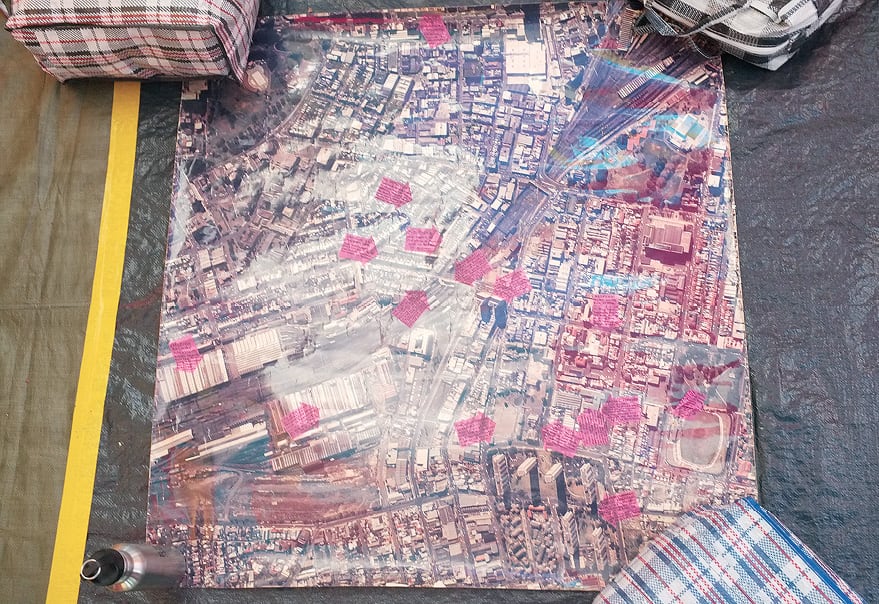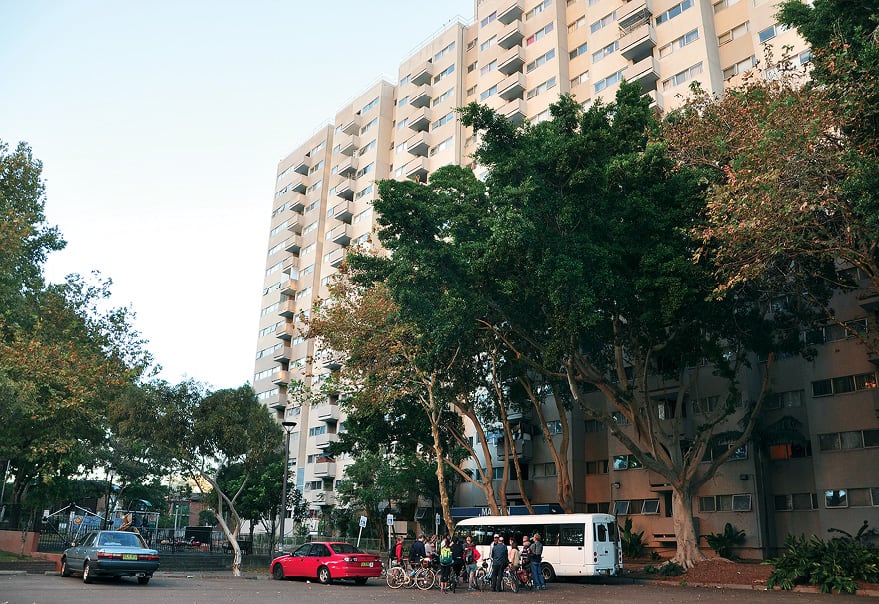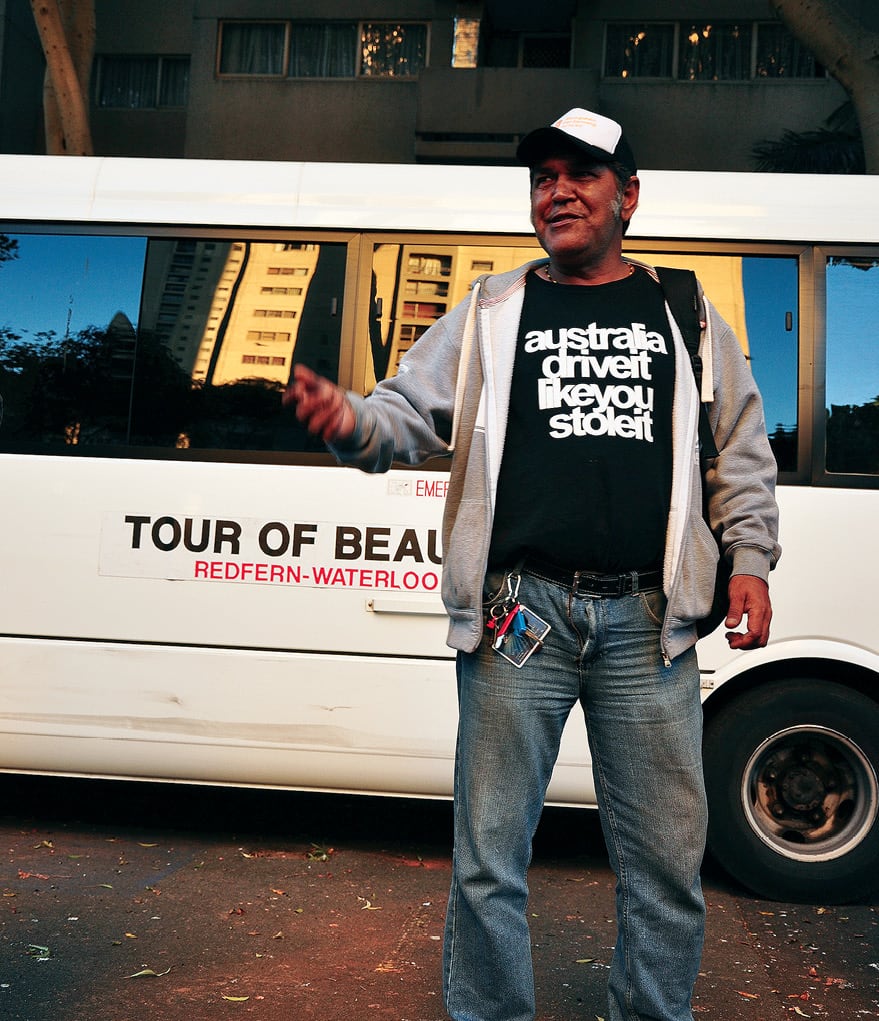 With 347 social media shares it seems that Fairfax reporter Sue Williams’ story ‘Redfern squatter seeks to take ownership of terrace using arcane law’ (6 June 2016) hit a nerve. The article no doubt tantalised online readers with a tale of ‘an abandoned house, a missing owner, a mysterious squatter and an archaic law [that] all add up to a puzzle that could lead to a young banker taking ownership of a million-dollar home without paying a cent’.1 One suspects that the memorable point of difference that made the story so sharable on Facebook and Twitter was not the implicit threat to the security of investment property owners nationwide, but the unpalatable factual morsel that the squatter is, well, a banker. While in the 1970s the streets of Redfern where descended upon by local community action groups, supported by the NSW Builders Labourers Federation as sites for Green Bans that aimed at conserving terraces from demolition, it’s not exactly surprising that the intensity of the present neoliberal turn should see the action of occupation — though clearly not the cause — atomised to a point of individual self-interest that would make Ayn Rand proud.
This story encapsulates the quarter-century rise of Sydney’s real estate market as it transitioned from the early 1990s economic recession ‘we had to have’, in the diabolic confessionary words of then federal Treasurer Paul Keating, to our current state of feverishly rampant acquisition of housing as appreciating asset par excellence. Indeed, for what by now seems like the vast majority of the propertied, political and prudential class, if you don’t have an investment property portfolio you’re either too dumb to game the Australian tax system for its scandalously generous concessions that ensure unearned and unproductive capital begets more unearned and unproductive capital, or too lazy to ‘get a good job that pays good money’, as our last federal Treasurer Joe Hockey chimed. Despite mounting evidence to the contrary, the notion that Australian society is one of the most egalitarian in the world stubbornly remains a belief that is difficult to let go by a citizenry that prefers the politically stable comforts of its delusions. As I write this text we are weeks away from another Federal election marked by the lack of sustained face-to-face public debates between its main contenders. Second only to the unfathomable realities of irreversible climate change, the issue of housing and its attendant social ramifications when viewed solely as a privatised space of individuality and financialised unit primed for speculative transactions is now front and centre in the Australian electorate’s mind, albeit within vastly oppositional ideological camps. Where one sits on the ideological spectrum isn’t necessarily determined by whether one has a foot on the property ladder, precarious or otherwise, but rather by an individual’s commitment to social equity.
With 347 social media shares it seems that Fairfax reporter Sue Williams’ story ‘Redfern squatter seeks to take ownership of terrace using arcane law’ (6 June 2016) hit a nerve. The article no doubt tantalised online readers with a tale of ‘an abandoned house, a missing owner, a mysterious squatter and an archaic law [that] all add up to a puzzle that could lead to a young banker taking ownership of a million-dollar home without paying a cent’.1 One suspects that the memorable point of difference that made the story so sharable on Facebook and Twitter was not the implicit threat to the security of investment property owners nationwide, but the unpalatable factual morsel that the squatter is, well, a banker. While in the 1970s the streets of Redfern where descended upon by local community action groups, supported by the NSW Builders Labourers Federation as sites for Green Bans that aimed at conserving terraces from demolition, it’s not exactly surprising that the intensity of the present neoliberal turn should see the action of occupation — though clearly not the cause — atomised to a point of individual self-interest that would make Ayn Rand proud.
This story encapsulates the quarter-century rise of Sydney’s real estate market as it transitioned from the early 1990s economic recession ‘we had to have’, in the diabolic confessionary words of then federal Treasurer Paul Keating, to our current state of feverishly rampant acquisition of housing as appreciating asset par excellence. Indeed, for what by now seems like the vast majority of the propertied, political and prudential class, if you don’t have an investment property portfolio you’re either too dumb to game the Australian tax system for its scandalously generous concessions that ensure unearned and unproductive capital begets more unearned and unproductive capital, or too lazy to ‘get a good job that pays good money’, as our last federal Treasurer Joe Hockey chimed. Despite mounting evidence to the contrary, the notion that Australian society is one of the most egalitarian in the world stubbornly remains a belief that is difficult to let go by a citizenry that prefers the politically stable comforts of its delusions. As I write this text we are weeks away from another Federal election marked by the lack of sustained face-to-face public debates between its main contenders. Second only to the unfathomable realities of irreversible climate change, the issue of housing and its attendant social ramifications when viewed solely as a privatised space of individuality and financialised unit primed for speculative transactions is now front and centre in the Australian electorate’s mind, albeit within vastly oppositional ideological camps. Where one sits on the ideological spectrum isn’t necessarily determined by whether one has a foot on the property ladder, precarious or otherwise, but rather by an individual’s commitment to social equity.
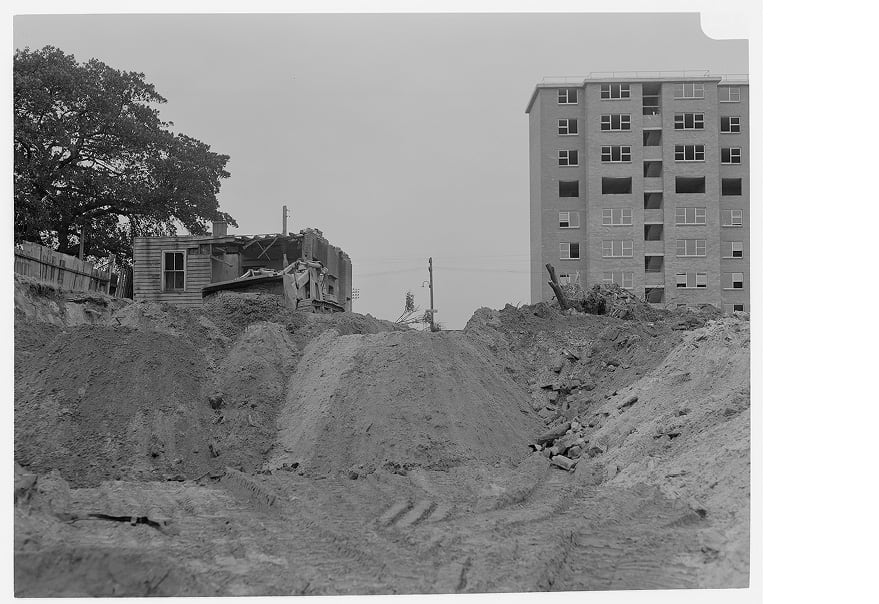 The most indicative historical juncture of this national development is inarguably the turn of the millennium, when Sydney hosted the Olympic Games. From the moment International Olympic Committee President Juan Antonio Samaranch declared ‘the winner is Sydney’ from a podium in a Monte Carlo ballroom, in September 1993, Sydney changed forever.2 To watch footage of then-New South Wales Premier John Fahey reacting to Samaranch’s announcement with wild abandon is to witness the performative embodiment (surely the most physically delirious and graphically delicious ever screened in prime time!) of the syllogistic logic of the state, the so-called free market economy and the public good. A favourite instrument of that logic is the public private partnership, deals that routinely demonstrate that they almost always cost taxpayers more in the long run, with profits privatised and losses socialised. The land reclamation, environmental remediation, adaptive re-use and property development undertaken at the Olympic site in Homebush remains Australia’s most extensive and expensive urban renewal project, although Barangaroo’s projected six-plus billion dollar cost may yet surpass it. If this was, in part, fuelled by the mutually rewarding interests of the increasing financialisation of the economy as the 1990s ran its course, which in turn infected the social welfare policies and provisions of Howard-era Australia, so much the better in the eyes of government as corporate partner. By the time living rock legend Jimmy Barnes took to the stage at Stadium Australia to belt out the classic Working Class Man at the opening ceremony, it was as if the country was subliminally projecting a eulogy for any mugs still clinging onto the old ideals of an honest pay for an honest day’s work, ‘saving all the overtime for the one love of his life’, as it goes.
The most indicative historical juncture of this national development is inarguably the turn of the millennium, when Sydney hosted the Olympic Games. From the moment International Olympic Committee President Juan Antonio Samaranch declared ‘the winner is Sydney’ from a podium in a Monte Carlo ballroom, in September 1993, Sydney changed forever.2 To watch footage of then-New South Wales Premier John Fahey reacting to Samaranch’s announcement with wild abandon is to witness the performative embodiment (surely the most physically delirious and graphically delicious ever screened in prime time!) of the syllogistic logic of the state, the so-called free market economy and the public good. A favourite instrument of that logic is the public private partnership, deals that routinely demonstrate that they almost always cost taxpayers more in the long run, with profits privatised and losses socialised. The land reclamation, environmental remediation, adaptive re-use and property development undertaken at the Olympic site in Homebush remains Australia’s most extensive and expensive urban renewal project, although Barangaroo’s projected six-plus billion dollar cost may yet surpass it. If this was, in part, fuelled by the mutually rewarding interests of the increasing financialisation of the economy as the 1990s ran its course, which in turn infected the social welfare policies and provisions of Howard-era Australia, so much the better in the eyes of government as corporate partner. By the time living rock legend Jimmy Barnes took to the stage at Stadium Australia to belt out the classic Working Class Man at the opening ceremony, it was as if the country was subliminally projecting a eulogy for any mugs still clinging onto the old ideals of an honest pay for an honest day’s work, ‘saving all the overtime for the one love of his life’, as it goes.
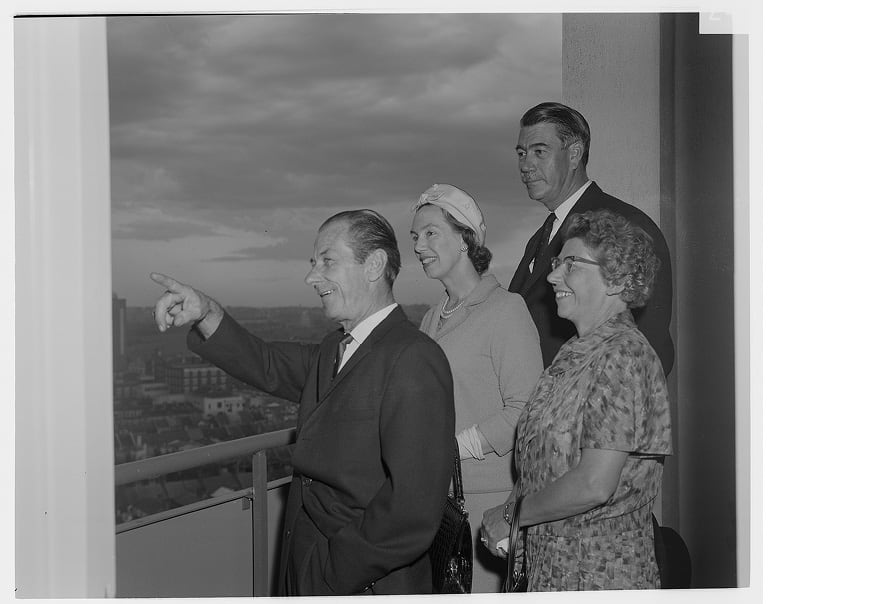 In December 2000, as the glories of gold in the arenas of track, field and pool still occupied the collective consciousness, a collective of a different order opened an art gallery named SquatSpace in a shopfront on Sydney’s Broadway strip, leading to Central train station. The gallery was located in one of four buildings owned by the South Sydney City Council that had been occupied by individuals from the Sydney Housing Action Collective at the beginning of that year. Artists crucial to the development of the gallery and its program — including Diego Bonetto, Mickie Quick, Lucas Ihlein, Keg de Souza, Arlene TextaQueen, Danae Natsis and Emma Jay among others — invited fellow artists to exhibit their work for free on the proviso that they contributed to the daily life of the community that had emerged in the Broadway squats, as well as the maintenance of the buildings. Jettisoning the notion of tabula rasa of the white cube, SquatSpace insisted that exhibiting artists embrace, incorporate or otherwise work around the residue left by previous exhibition instalments.3 As the Broadway squatters’ protracted wrangling with Council attracted increasing public visibility, with the group unfurling large-scale banners on the side of one of the buildings that proclaimed ‘Squatting: It’s as Safe as Houses’ and ‘Why Let Houses Rot? Squat’, eviction the following year was perhaps inevitable.4 Not since the activities of the Sydney-born B.U.G.A. U.P. (Billboard Utilising Graffitists Against Unhealthy Promotions), who over the period 1975–85 gained international recognition for their civil disobedience aligned against tobacco advertising in the visual urban environment, had an artist-activist-culture-jamming group so openly revealed their identities and political standpoints by accessible means. However, unlike B.U.G.A. U.P., whose interventions were eventually lionised by the establishment just as public health policy on tobacco changed, the program of the Broadway squatters continues to present a more direct challenge to the vested interests of a revanchist state.
In December 2000, as the glories of gold in the arenas of track, field and pool still occupied the collective consciousness, a collective of a different order opened an art gallery named SquatSpace in a shopfront on Sydney’s Broadway strip, leading to Central train station. The gallery was located in one of four buildings owned by the South Sydney City Council that had been occupied by individuals from the Sydney Housing Action Collective at the beginning of that year. Artists crucial to the development of the gallery and its program — including Diego Bonetto, Mickie Quick, Lucas Ihlein, Keg de Souza, Arlene TextaQueen, Danae Natsis and Emma Jay among others — invited fellow artists to exhibit their work for free on the proviso that they contributed to the daily life of the community that had emerged in the Broadway squats, as well as the maintenance of the buildings. Jettisoning the notion of tabula rasa of the white cube, SquatSpace insisted that exhibiting artists embrace, incorporate or otherwise work around the residue left by previous exhibition instalments.3 As the Broadway squatters’ protracted wrangling with Council attracted increasing public visibility, with the group unfurling large-scale banners on the side of one of the buildings that proclaimed ‘Squatting: It’s as Safe as Houses’ and ‘Why Let Houses Rot? Squat’, eviction the following year was perhaps inevitable.4 Not since the activities of the Sydney-born B.U.G.A. U.P. (Billboard Utilising Graffitists Against Unhealthy Promotions), who over the period 1975–85 gained international recognition for their civil disobedience aligned against tobacco advertising in the visual urban environment, had an artist-activist-culture-jamming group so openly revealed their identities and political standpoints by accessible means. However, unlike B.U.G.A. U.P., whose interventions were eventually lionised by the establishment just as public health policy on tobacco changed, the program of the Broadway squatters continues to present a more direct challenge to the vested interests of a revanchist state.
the discursive move from ‘public housing’ to ‘social housing’ signals the decline of social citizenship [as] … not simply a renaming of public housing, but rather a name giving — social housing — to a new form of post-welfare state low-income housing to be provided by the non-government and private sectors.8It follows that just as the ‘social’ in contemporary art is tested by the motives and consequences that arise from artists’ strategies of engagement, if we are to passively accept the ascendency of neoliberalism upon human relations one can only dread what might become of ‘beauty’.
Pedro de Almeida is an arts manager, curator and writer and has been Program Manager at 4A Centre for Contemporary Asian Art, Sydney, since 2012. His current postgraduate research focuses on art projects in social housing estates in Australia and internationally.
1. Sue Williams, ‘Redfern squatter seeks to take ownership of terrace using arcane law’, Domain, 9 June 2016, http://www.domain.com.au/news/redfern-squatter-seeks-to-take-possession-of-terrace-using-arcane-law-20160608-gpcp8t/
2. This is actually to say that Sydney became more like a former version of itself, mirroring the construction and speculative land boom of the 1880s, only this time with no corresponding bust on the flip-side brought on by nervous overseas investors.
3. For a good summary of this history in the context of Sydney’s artist-run gallery scene, see Amy Griffiths, From Then to Now: Artist Run Initiatives in Sydney, New South Wales, MA thesis, University of New South Wales, Sydney, 2012, p. 127–130.
4. See ‘The Broadway Squats’, Direct Action 174 (2001) 6, for a run down of the events leading up to eviction. Accessed at http://www.australianmuseumofsquatting.org/?p=808.
5. SquatSpace is a non-hierarchical collective of individuals and others who contributed to the gallery in the Broadway squats. Likewise, the 2016 Tours were led by Bonetto, de Souza, Ihlein and Quick, all of whom have been recognised as principal members since circa 2010.
6. For wonderful filmic historical documentation of the 1970s battle by residents to save the area from further slum clearance and redevelopment by public housing authorities see Tom Zubrycki’s 50-minute documentary Waterloo (1981).
7. Zanny Begg and Keg de Souza (eds), There Goes the Neighbourhood: Redfern and the Politics of Urban Space, Breakdown Press in association with Performance Space, Sydney, 2009. Available at http://www.theregoestheneighbourhood.org/TGTN-eBook.pdf
[^8]: Dallas Rogers and Michael Darcy, ‘Global city aspirations, graduated citizenship and public housing: analysing the consumer citizenships of neoliberalism’, Urban Planning and Transport Research 2:1 (2014), p. 83.